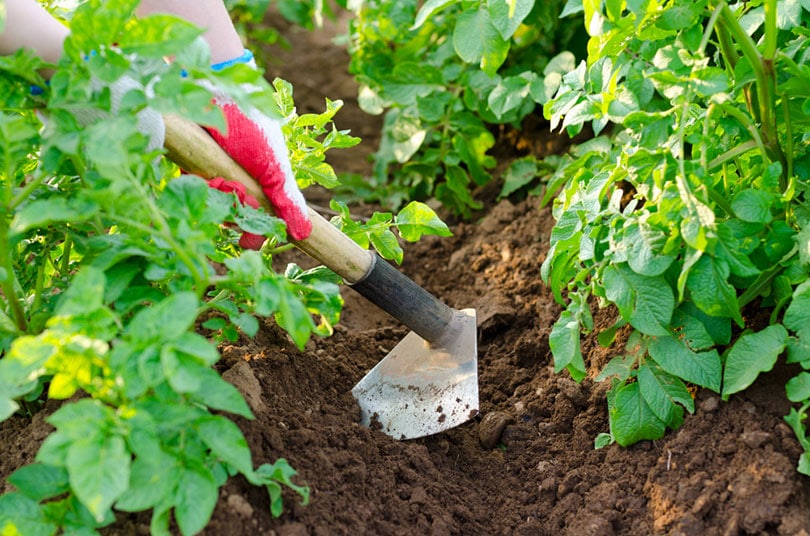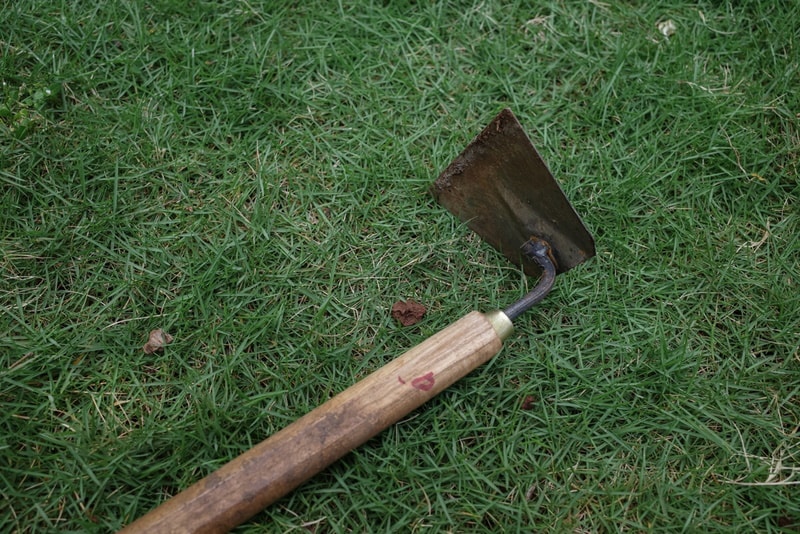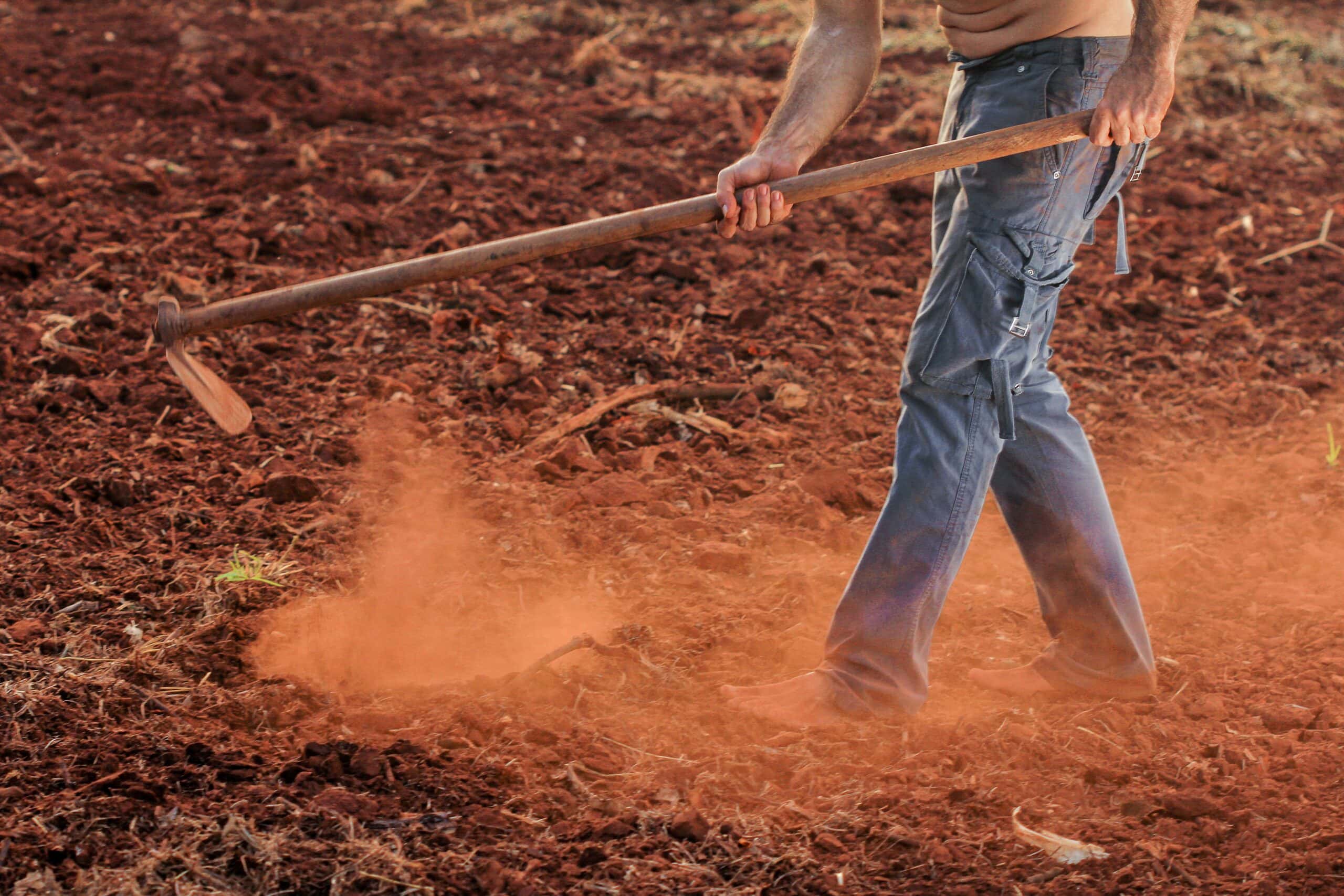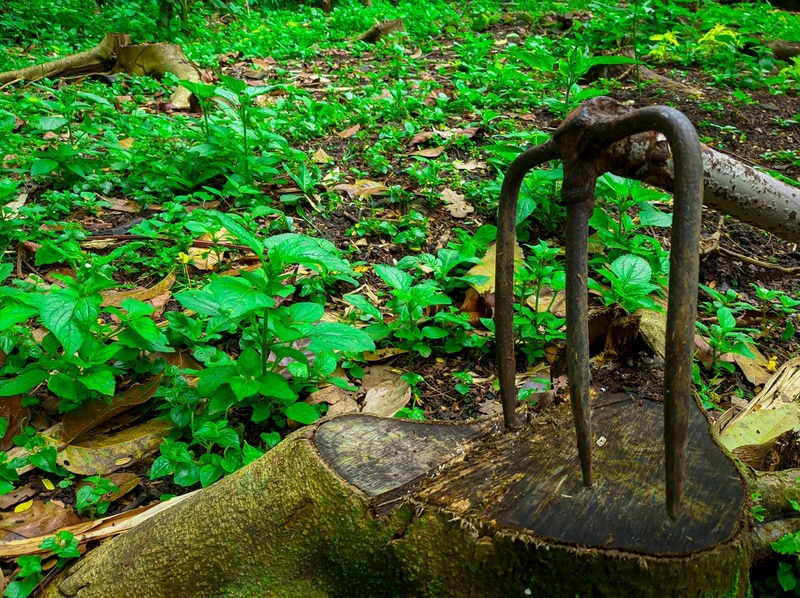10 Types of Garden Hoes: Pros & Cons of Each
-
Pete Ortiz
- Last updated:

The garden hoe is an ancient device used back and forth but has become a standardized tool now, which is necessary for any level of gardening, no matter how skilled the gardener is.
Every gardener’s dream is to find the perfect tool for executing their plans and visions for a polished garden. The spring season is among us, and it’s time to find out about one of the essential tools in gardening. The annual weeds are slowly popping up, and proper managing is necessary to keep your plants and vegetables safe and healthy.
Before You Begin
You’ve probably figured out that some digging around or plowing is necessary for your garden. Maybe you just now realized that there are types of hoes and other tools and that not all of them will help you with what you need. Don’t let too much information confuse you. There are many differences in types of hoes. We will give you a list to choose from based on which type of hoe is right for you. Which one to choose will depend on what you are planning to use it for and will make a massive difference since it will turn any back-bending job into a fun and productive activity.
The 10 Types of Garden Hoes
1. Grub or Digging Hoe
This tool is so far the oldest type of hoe. It has been around ever since the practice of horticulture began in society. This tool is adequate for everyone since it doesn’t require too much strength to swing it, but it requires stamina.
The principle of use is pretty simple; you swing the digging hoe, and with all your strength, it penetrates the ground, and once you manage to do that, you pull that chunk of soil toward you.
A digging hoe usually has a heavy or bulky blade, which is crucial since it will have to crack the soil with only the force of gravity. The optimal angle between the handle and the blade would be about 80º. This way, you can either dig out big chunks of rock or weeds that you cannot remove with your bare hands.
- Breaking and digging huge and heavy piles of dirt and rock
- Digging up big chunks of weed
- Chopping and pulling thick and firm roots
- Moving piles of dirt
- Cleaning out and mixing the garden soil
2. Oscillating or Stirrup Hoe
A stirrup hoe, also known as an oscillating hoe, is used for chopping weeds’ roots just below the soil’s surface. Its specific name comes from the resemblance to the stirrup on the saddle. Because you are weeding just underneath the surface, you are cutting the weeds at their most vulnerable spot. This method is excellent for reducing the growth of new weeds. It can move in any direction, and because of its movement pattern, the disturbance of the soil is also reduced significantly, which may lead to less drying of the soil. This hoe is much easier to use than the traditional hoe because of its back-and-forth action. It is more comfortable and causes less damage to your joints.
- Cutting weeds below surface level, damaging them at the roots and stems, and therefore preventing further growth
- Precisely removing weeds along rows or narrow spaces without damaging other plants nearby
- Gathering weeds in piles going to disposal or composting
3. Standard Draw Hoes

A standard Draw Hoe is so far the most common one used. Even though it is one of the most applied types of hoes, the use of this tool is not that practical and convenient. Often, the handle is not placed correctly or is too light, so it bounces off the soil instead of penetrating it. Even tho it is too weak to be used as a digging hoe, it can still serve for graveling or pulling loose soil. If the angle between the blade and the handle is adjusted (there are exceptions when you cannot modify the blade), you can use the tool to effortlessly tumble the top layer of soil and pull the weeds.
- Tumbling and scraping top layers of soil
- Cutting or pulling the roots of the weeds
- Graveling and mixing concrete
4. Pointed or Triangular Draw Hoe
A Pointed Hoe, usually shaped like a triangle or an arrowhead, is best used for planting seeds. The motion in which a Pointed hoe works and the shape of the blade make it idyllic for carving long, neat rows in the surface soil and preparing it for seeding plants. The pointed ends are perfect for weeding in narrow spaces between plant rows without damaging any surrounding plants.
- Carving rows for vegetable seeds or cutting holes for singular plants
- Loosening and tilling the soil
- Weeding between crop plants
- Digging out problematic roots of weeds
5. Flat Hoe

These hoes can be shaped in many different ways and look similar to other geometrical hoes, but with one difference; the blade is parallel to the soil’s surface. The motion these hoes create is usually a back and forth motion, and with the sharp edges, they cut through the smaller weeds. This tool, similar to the Stirrup Hoe, cuts the roots of the weeds from underneath the surface level, preventing further growth. The difference between this and the Stirrup hoe is that a Flat hoe can only chop away roots of the smaller, less demanding weeds. This tool’s purpose is not to cut more intricate roots or dig hardened soil.
- Chopping smaller, less demanding roots
- Slicing weeds with all four corners of the blade
- Tumbling soft and loose soil
6. Push-Pull Hoe
The Push-Pull Hoe has brought a revolutionizing weeding technique to the gardening world. The tool works by cutting the weeds at their roots, by both forwards and backward motion. This tool’s multifunction is what makes it loved by most garden experts. It has a V-shaped blade that allows you to penetrate the soil effortlessly by pushing the hoe forwards, and pulling it backward pulls the clipped root out. The blade can pierce through just about any soil, cutting through even the most stubborn and problematic weeds.
- Cutting weed from their roots; no matter how deep or demanding
- Weeding close to drip irrigation lines, without the fear of damaging the tubing, or the vegetable plants
- Digging through the most problematic soil or even mulch
7. Swan Neck Hoe
This tool’s name clearly comes from the way it appears; it is in the shape of a swan’s neck. This shape allows it to dig around borders, rows, and between plants precisely. The neck of the hoe is easily adjusted, which provides a more comfortable managing of the tool. The swanlike shape of the handle is perfect for gently prodding the nearby plants or vegetables out of your way while you are cutting away the weeds. The design of this particular hoe is for weeding in the deeper surfaces and loosening the soil before planting. This type of hoe falls under the category similar to the Draw Hoes because its main action is to pull and scrape the solid while weeding in harder areas.
- Weeding in unreachable areas
- Carefully cutting weeds without damaging other vegetables or plants
- Hoeing through the deepest soil
- Precisely digging around fine rows or edges
8. Sweeping Hoe
The primary purpose of this hoe is to slice smaller weeds with a sweeping motion. The back and forth motion will cut through the surface layer with minimal soil disturbance. This type differs from other hoes for one apparent reason; it is held upright to the ground.
- Keeping your garden neat, with frequent but with minimal effort
- Minimal soil disturbance
- Efficient removing of smaller, surface weeds
9. Short-Handled Hoe
The ancestors of long-handled hoes. The toughest hoe to use is the short-handled one because you must kneel, bend, or sit while maneuvering a hand hoe. While most gardeners will avoid it at all costs, it has its virtues. It is excellent for reaching places where a long-handled hoe might not, and it is a great helper for when you have some minor surface growth of roots but cannot pull them with your bare hands. Still, this tool is not as common as regular hoes, but it is an excellent tool to have somewhere in the back of your shed when you need to retouch your garden quickly.
- Reaching inaccessible areas with ease
- Weeding small, surface roots
- Work cramped areas while seating
10. Fork Hoe

It got its name from the tines that make this tool and allow it to break through any soil quickly. No extra strength is required to use this tool; you don’t need to swing it above your head like a grub hoe. With minimal force, you can lightly drag the tool on the surface while giving it a gentle push towards the ground. It is also used to prepare the soil for planting or sowing by loosening and aerating even the hardest chunks of dirt. Like all the other hoes, this one is also useful for removing weeds with their roots.
- Preparing and aerating soil for sowing and planting
- Tumbling mulch
- Pulling and lifting mulch, gravel, or compost
- Cutting and removing weeds with roots
Conclusion
Don’t be confused if you figure out you need a couple of these hoes; it is entirely normal, and even the most serious gardeners don’t have all these gardening tools available in their sheds. This happens because every hoe serves a different purpose, but when you have one hoe for every action, you are all set for any problem that comes your way.
After you’ve carefully read each part of this article, hopefully, you can better understand all the different hoes used and what makes them unique and individual.
Featured Image Credit: withGod, Shutterstock
Contents



